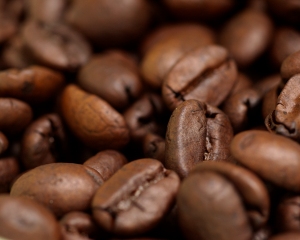French roast, mocha, cappuccino, macchiato … whatever the persuasion of Joe, Americans love their coffee a lot. Or, should it be a latte? As a nation, we consume 400 million cups of the beloved brew every day. The rise of café culture has significantly increased the demand for coffee, which has become the world’s second most tradable commodity, other than crude oil. However, our cravings for java can have environmental and economic implications.
Coffee farming and roasting can have major impacts on the environments and economies of the areas where beans are grown. Traditionally, coffee is cultivated under a canopy of shade. The shady environment improves the yield of the harvest and the flavor of the beans, and it creates habitat for indigenous wildlife, protects precious topsoil from erosion, improves air quality and provides natural pest and disease control for the plants. The demands for coffee, though, have led to the development of sun cultivation on coffee plantations. Sun cultivation usually requires the use of pesticides and fertilizers, and it contributes to deforestation. In Central America, for instance, 2.5 million acres of forest have been cleared for coffee farming. The degradation of the ecosystem has devastated the biodiversity and ravaged the environment in this and other coffee-growing regions throughout the world. Furthermore, coffee is produced primarily in developing countries. One hundred million people worldwide grow coffee, but farmers receive an average of only ten percent of its ultimate retail price. Since the price of coffee is subject to the vast and often volatile fluctuations of the commodities market, some farmers earn less than a living wage.
To support sustainable coffee farming and trade methods, choose Fair Trade Certified, Rainforest Alliance Certified, Smithsonian Migratory Bird Friendly Certified, Certified Organic and shade grown blends. These coffees contain fewer chemical pesticides and fertilizers, promote habitat preservation, encourage sustainable farming and fair labor practices, and support and invest in local economies. In addition, environmentally sound farming practices allow coffee beans to ripen at slower rates to create bolder, richer tastes.
Café culture also contributes to the waste stream. In recent years, single use pods have gained popularity among coffee consumers, but they have also created exorbitant amounts of trash. Between 2008 and 2013, sales of these pods increased by 78.6 percent in the United States. In 2013, consumers purchased $3 billion worth of coffee pods – enough pods to wrap around the Earth nearly 11 times and produce 966 million pounds of waste. Many of the plastics used in coffee pods cannot be recycled and may contain chemicals that can disperse when heated. Coffee with cream, sugar and bisphenol A is not appealing by most standards. Pods are also more expensive than traditional bags of coffee. A comprehensive analysis by the New York Times found that one pound of coffee packed in pods costs $50 whereas one pound of coffee packed in bags costs only $20. If you have a single cup coffee brewer that requires a pod, reduce waste by using a reusable pod such as Ekobrew or Eco-Fill instead of disposable pods and providing your own environmentally sound coffee. You can also substitute disposable filters for reusable filters in traditional coffee brewers.
To further reduce the waste associated with your coffee, use a reusable container instead of a disposable cup whenever possible. Some coffee shops will even offer a discount if you provide your own container. If you’ll be enjoying your coffee at the café, ask your barista if washable mugs are available for use while you are there. If you have to use a disposable cup, choose a compostable, biodegradable or recyclable option if one is available. Avoid Styrofoam, which is a waste and public health concern. Avoid the use of individually wrapped sugars and creamers, and enhance your coffee instead with additions from bulk packages.
Elements of your coffee break are recyclable, too. If you have enjoyed your coffee from a disposable cup, recycle the plastic lid with mixed plastics and the coffee collar with mixed paper. Coffee grounds can be reused as well. Coffee grounds are rich in nitrogen, so they can be added to your garden soil to create a natural fertilizer. A bowl of coffee grounds can be placed in your refrigerator to absorb odors, and they can be used in your beauty routine as a gentle exfoliant.
Coffee brewing consumes energy and water as well. Coffee brewers are not evaluated by the federal government for Energy Star certifications, so an energy efficient model may be indistinguishable. However, you can conserve energy by powering down your brewer when it is not in use. If you need hot coffee on hand, do not rely on the brewer’s warming plate, which consumes nearly 1,000 watts of electricity during one use. Instead, use a thermal carafe. Consider a French press, which requires less water and energy. If you prefer a single cup machine, choose a model with a flow-through water heater that warms water only when needed and powers down when coffee is not brewing for considerable energy savings.
Even though many producers and retailers are striving to provide ethically sourced and environmentally responsible coffees, reduce waste and even construct more resource-efficient facilities, consumers can also expand the market for green beans by demanding and implementing sustainable practices with every cup.
SELECT THE IMAGE FOR A PRINTABLE POSTER!
FOR MORE INFORMATION …
Smithsonian Migratory Bird Friendly Certification
Sources for Shade Grown Coffee from Earth Easy
International Coffee Organization: Developing a Sustainable Coffee Economy








